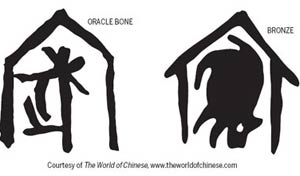Beijing faces high-wire tightrope act
Updated: 2011-10-07 10:11
By Colin Speakman (China Daily)
|
|||||||||
There are now two, somewhat conflicting, calls for China to rebalance faced with Western economic woes. One is for China to rebalance its own economy toward goods produced for domestic consumption and reduce the reliance on exports that propelled China before the 2008 Western financial crisis. The second is for China to contribute to reducing the imbalance in trade between China and the West, partly through consumer expenditure increases that include more imports.
There is an important distinction between domestic consumer goods production rising as a percentage of GDP and household consumer expenditure rising (and household savings falling) so that Chinese households buy more from the West. That will not directly create jobs in China and may divert demand away from domestic industries but it will help reduce the external imbalance.
There is no doubt politically that the Western trade deficits with China do need to be addressed in the current Western downturn and it is better for China that the surplus falls at current or moderately rising yuan exchange rates (which also assists control of inflation) rather than falls as a result of a rapid appreciation of the yuan. Premier Wen Jiabao has said that China does not seek a trade surplus and forecasts suggest it will decline significantly in 2012.
One policy that China is likely to implement to this effect is to cut taxes on luxury goods, where there is a high proportion that would come from imports, especially in fashion and cosmetics areas. The policy is not without critics as there would be a noticeable fall in revenue from import duties and it conflicts with China's desire to promote domestic brands as national champions and take them global. However on balance this policy is a good way of showing China's commitment to further openness and market economy status.
The domestic rebalancing toward households buying more of basic Chinese production remains no easy task. This policy was first encouraged in response to the financial crisis but the three years since then have not seen significant improvements in the average propensity to consume. The focus until recently has been on mitigating the impact on exports by a temporary halt to the gradual appreciation of the yuan - a period of stabilizing currency management which China is entitled to carry out - and, in keeping with the major Western economies, an economic stimulus package led by the Chinese government through investment expenditure on infrastructure and government-funded consumption incentives such as consumer durable rebate vouchers in rural areas.
Again, in keeping with the West, none of these stimulus packages can be repeated indefinitely and the fiscal deficits in the economies of the US and Europe make further stimulus highly unlikely. Low, even zero, interest rates and quantitative easing remain the only options for the West, but carry with it a risk of permitting global inflation.
World Bank President Robert Zoellick said in a recent visit to China. "If China is to continue to grow strongly, it can no longer rely simply on soaring exports and investment, but must rebalance through greater domestic consumption."
However he stopped short of advising precisely how to achieve this. In that he has been in good company, for while the concept of the need for this balancing has been widely accepted, how to kick-start it has been far from clear.
Initially it appears that there are historic cultural differences compared to Western economies in households' approach to consumption. We should note that governments also participate in acquisition of consumer goods (which is not to be confused with government investment) and so most comparative statistics look at total domestic consumption. On that basis the percentage of consumption in GDP has been falling as Chinese incomes rise - down from 60 percent in 1990 to just under 50 percent in recent years - surely a strange result and not the image of rapid consumer retail sales that is more public.
Of course the explanation is that, since economic growth has been so strong over many years, retail spending has risen in absolute terms while failing as a percentage of GDP. The figures compare unfavorably with the US, Germany and the UK where the percentages in the last decade have been 90 percent, 75 percent and 85 percent respectively.
Yet the unwillingness to risk spending a higher proportion of income is not a general Asian cultural characteristic either. In Vietnam in the last decade it has been around 70 percent, in Japan around 75 percent and in India around 65 percent. Getting China back to 60 percent would be a start and a huge boost to the Chinese economy.
The major long-term strategy surely has to be to encourage more home ownership. The purchase of a home inevitably spurs a range of consumer expenditure - particularly on consumer durables - which people do not consider when living with parents or temporarily renting their home.
The author is an economist and director of China Programs at CAPA International Education, a USA-UK based organization. The opinions expressed in the article do not necessarily reflect those of China Daily.










